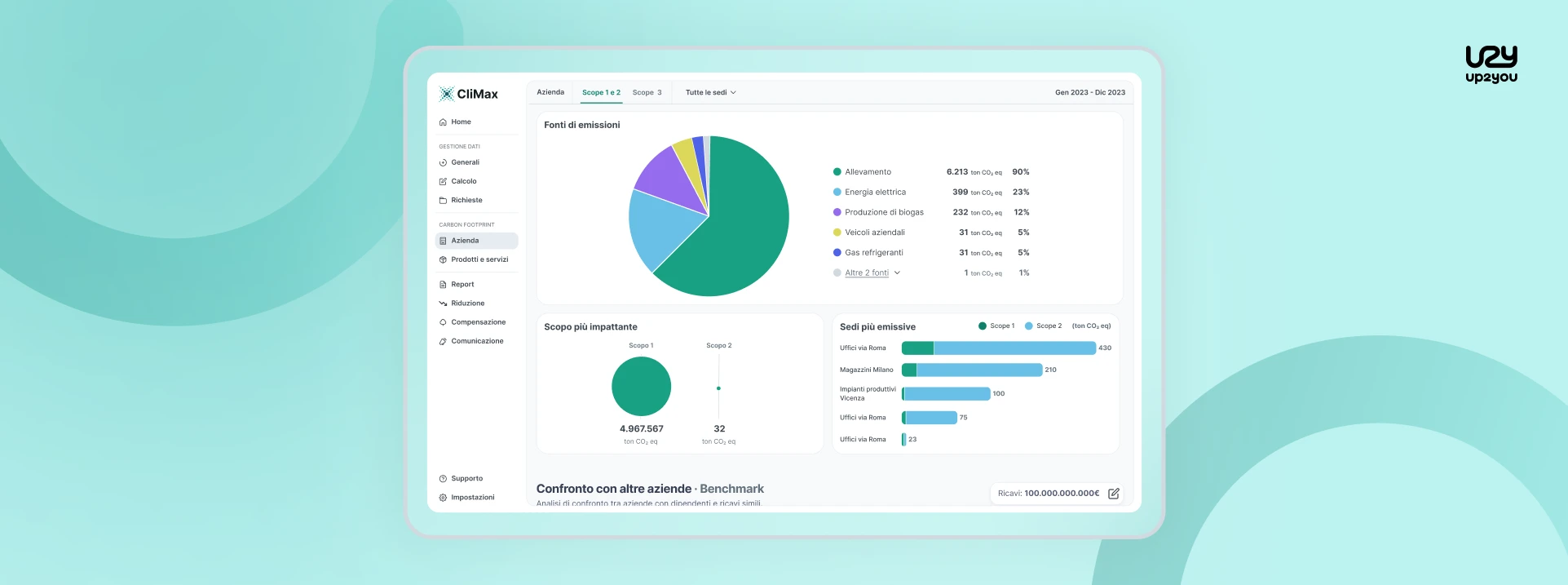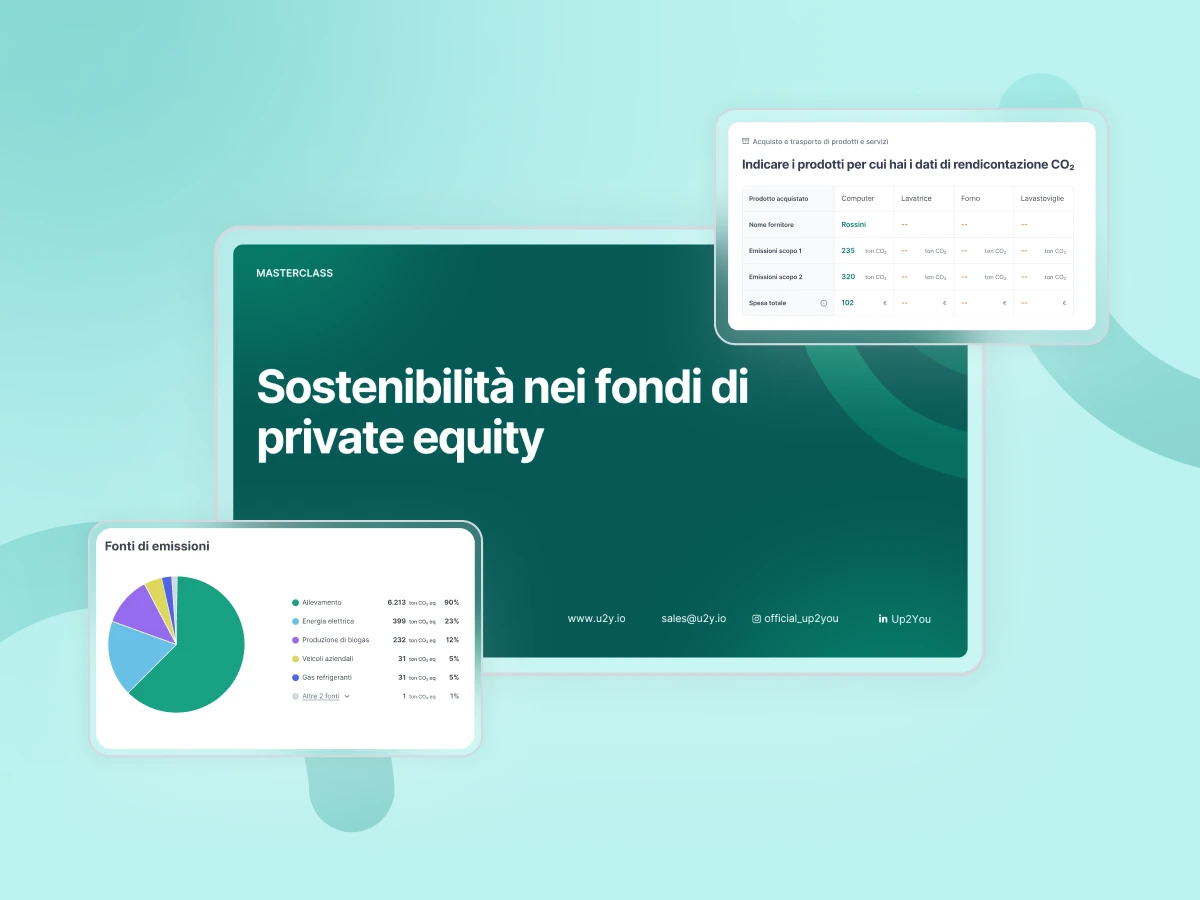{summary#bullet-1}
The ESG commitment to private equity funds
In recent years the ESG criteria (Environmental, Social, Governance) have become an integral part of the investment strategies of private equity funds, going from being an accessory theme to representing a decisive element in value creation.
According to data from Invest Europe, more than 75% of European companies Of private equity and venture capital integrates ESG factors in investment decisions and portfolio management, with an adoption that reaches up to 90% among buy-out funds. This is a profound change that reflects the increasing sensitivity of investors, institutions and public opinion towards sustainability, but also the awareness that careful management of environmental, social and governance aspects can strengthen financial performance in the medium to long term.
The latest AIFI report confirms this trend.
Almost all of the managers interviewed adopted formal ESG policies and about 85% integrates sustainability factors throughout the investment life cycle, from the definition of the pipeline to due diligence, to the management of the investee companies and the exit phase.
It is therefore no longer just a matter of regulatory compliance, but a strategic approach which allows you to:
- reduce operational, reputational and legal risks;
- improve efficiency and internal processes;
- attract institutional investors and qualified talent;
- obtain higher ratings in disposal operations.
This does not mean that the funds are looking exclusively for companies that are already virtuous.
On the contrary, more and more often the ESG lever becomes a initial screening criteria to identify targets with room for improvement.
Accompany the participants in a sustainable growth path In fact, it allows us to generate shared value, improving the reputation, efficiency and attractiveness of companies.
In this sense, ESG is not only a risk mitigation factor, but a real one Competitive leverage which stimulates innovation, access to new markets and strengthening ties with stakeholders.
I benefits of a well-structured ESG approach are manifested on several levels:
- for target companies, that can increase their resilience and competitiveness;
- For the funds, which consolidate their reputation and reduce the chances of litigation or devaluation;
- for investors, which see the risk profile decrease and the prospects for sustainable return increase.
The phenomenon is part of a wider cultural change: from the 80s, with Corporate Social Responsibility, to the United Nations Sustainable Development Goals, sustainability has progressively entered business language and strategies.
Today, for private equity funds, it represents a priority that intertwines regulatory requirements, investor expectations and long-term vision.
{summary#bullet-2}
Regulatory framework and sustainability reporting
The growing commitment of private equity funds to sustainability is not only the result of a strategic choice, but also the consequence of a European regulatory framework which has evolved significantly in recent years.
Starting with the European Commission's 2018 Action Plan, EU regulation has introduced tools that have revolutionized the way in which banks, investors and funds approach sustainable finance.
Let's see what are the pillars of this journey.
- SFDR (Sustainable Finance Disclosure Regulation): classifies funds based on the level of integration of ESG criteria (Art. 6, 8 or 9) and imposes transparency obligations on the ways in which sustainability factors are incorporated into investment processes.
- EU taxonomy: defines what can be considered a sustainable economic activity, providing technical reference criteria.
- CSRD (Corporate Sustainability Reporting Directive): requires companies to provide detailed information on ESG performance and risks, data that funds must collect and consolidate in their reports.
- CS3D (Corporate Sustainability Due Diligence Directive): introduces ESG due diligence obligations along the entire value chain.
Alongside these regulations, Bank of Italy, in line with the ECB's expectations, is strengthening the supervision of ESG risks for supervised funds and intermediaries. It is required that environmental, social and governance criteria be integrated into internal governance, risk management systems and long-term strategies, with particular attention to climate and environmental risks.
Within this context, the ESG due diligence has become a crucial hub for funds: it allows not only to evaluate risks and opportunities related to sustainability of the target company, but also to define contractual conditions, guarantees, disclosure obligations and post-closing action plans.
The result of this analysis can have a decisive influence on:
- the evaluation of the target and the purchase price;
- the setting of contractual clauses, including those related to compliance with DNSH (Do Not Significant Harm) criteria and the measurement of principal adverse impacts (PAI);
- the integration of specific ESG actions during the management of the subsidiary;
- internal governance, with the possible introduction of ESG KPIs also linked to management remuneration systems.
In parallel with regulatory obligations, sustainability reporting has assumed a central role for private equity funds.
Institutional investors are asking transparency and comparability of data, urging managers to refer to internationally recognized standards such as:
- ESRS (European Sustainability Reporting Standards), aligned with the CSRD;
- GRIS (Global Reporting Initiative), with a multistakeholder approach;
- SASB (Sustainability Accounting Standards Board), focused on the financial relevance of ESG information.
The main challenge is theharmonization: to standardize metrics and indicators in a context where standards are multiple and constantly evolving.
After the simple 'verification of regulatory compliance' phase, ESG reporting is becoming a strategic tool which allows funds to:
- strengthening the confidence of Limited Partners and institutional investors;
- improve transparency with regard to the investee companies;
- consolidate their reputation as responsible and forward-looking players in the market.
In summary, the regulatory framework and reporting are not only constraints to be respected, but Fundamental levers to guide investment choices, improve governance and ensure the creation of long-term sustainable value.
{summary#bullet-3}
Certifications, ratings and ESG initiatives for private equity funds
Alongside regulations and reporting, an increasingly central role in ESG strategy of private equity funds is held by certifications, ratings and international initiatives that make it possible to measure, communicate and strengthen the commitment to sustainability.
These tools not only help to standardize evaluation criteria, but they also offer major credibility vis-a-vis investors, institutions and stakeholders.
Among the most common are:
- B Corp, a certificate that certifies an organization's overall commitment to creating value for all stakeholders, not just shareholders, by measuring social, environmental and governance aspects,
- EcoVadis, an ESG rating system that evaluates business performance and provides comparable scores, widely used in global supply chains to guarantee minimum sustainability standards;
- CDP (Carbon Disclosure Project), a disclosure platform that allows companies and funds to transparently communicate their environmental impacts, with a particular focus on emissions, water and deforestation.
In addition to these certification and rating tools, private equity funds are strengthening their climate strategy through more technical and certifiable approaches.
A key element is the Calculation of the carbon footprint of the fund, which makes it possible to quantify direct and indirect emissions and represents the basis for a decarbonization strategy believable.
Based on this measurement, managers can define:
- short-term emission reduction targets, functional to operational improvement;
- long term goals, aligned with global climate neutrality targets.
To give strength to these paths, many funds choose to join the Science Based Targets initiative (SBTi), which provides scientifically validated guidelines for establishing emission reduction objectives consistent with theParis Agreement.
In parallel, certifications such as ISO 14064 (quantification and reporting of greenhouse gas emissions) and the most recent ISO 14068 (carbon neutrality) offer an additional tool of transparency and credibility, allowing the results achieved to be verifiably communicated.
For private equity funds, the adoption of these certifications and initiatives is not only an exercise in compliance or reputation, but a concrete strategic lever.
I main advantages can be summarized in three points.
- Reputation: strengthening the image of responsible and far-sighted actors, able to attract investors sensitive to sustainability.
- Access to capital: benefit from a competitive advantage in fundraising, in particular from institutional investors who require increasingly strict ESG standards.
- Risk Management: reduce exposure to potential legal, regulatory or reputational risks, anticipating regulatory and market demands.
Ultimately, integrating certifications, ratings and ESG initiatives means for private equity funds not only aligning with the expectations of stakeholders and regulators, but above all consolidate your resilience and competitiveness in the long term, transforming sustainability into a real engine of value.
{summary#bullet-4}
ESG risk management in private equity funds
La risk management represents one of the most delicate and strategic aspects for private equity funds.
Integrate ESG criteria into Risk Management means not only evaluating the economic and financial strength of a target company, but also analyzing in depth the environmental, social and governance risks that may affect the value of the investment throughout the life cycle.
The fund approach is divided into 3 phases fundamentals.
- Identification: map the potential ESG risks related to the activity of the target company, the sector in which it operates and the geographical context of reference.
- Valuation: estimate the probability and impact of these risks, including not only direct effects (e.g. issues or legal disputes), but also indirect consequences such as reputational damage.
- Monitoring: implement control and continuous reporting systems to prevent critical issues and ensure consistency with the fund's ESG commitments.
An increasing role is played by C&E risks (Climate & Environmental), i.e. environmental and climate risks. These may result from extreme events, from regulatory developments in the field of decarbonization, from access to natural resources or from the inefficient management of emissions. Neglecting these variables means exposing yourself to potentially very high economic impacts, ranging from sanctions and lawsuits to losses of competitiveness in the market.
To address these risks in a structured manner, funds are increasingly focusing on the adoption of TCFD framework (Task Force on Climate-Related Financial Disclosures).
This approach involves the reporting of risks and opportunities related to climate change through four key dimensions: governance, strategy, risk management and metrics/targets. The TCFD thus provides an internationally recognized standard that allows investors to be informed not only of the awareness of risks, but also of the strategies adopted to mitigate them.

{summary#bullet-5}
Choral and Climax: Up2You's platforms for an effective ESG strategy
For private equity funds, sustainability is not limited to a set of compliance obligations, but becomes a distinctive element in the management strategy and communication with investors.
In this scenario, the platforms Choral and Climax by Up2You offer advanced technological solutions to make ESG processes simpler, more transparent and regulatory-proof.
One of the main advantages is the easy and collaborative data collection: funds can centralize and digitize ESG information, avoiding fragmentation, reducing margins of error and saving precious time. This allows you to build solid and consistent datasets, essential for dealing with audits, stakeholder requests and periodic reporting.
With Choral, managers have at their disposal a compliance-proof tool, designed for integrate with the main regulatory frameworks and respond precisely to disclosure obligations. La digitization of reporting makes the process more fluid, ensuring that the information provided is verifiable, standardized and comparable at an international level.
Another key element is the flexibility and customizationand indicators.
Every fund can modulate your reporting based on specific needs of its mandate, of the Limited Partners and of the supervisory authorities, choosing which metrics to prefer and how to represent them. This allows us to go beyond mere bureaucratic fulfillment and transform ESG data into tools for strategic management and value creation.
Finally, with Climax, the measurement of Fund carbon footprint becomes an essential piece for climate planning. The platform allows you to accurately calculate emissions, define short and long-term decarbonization strategies and, if desired, align with international initiatives such as the SBTi (Science Based Targets initiative). In this way, funds can present themselves to investors as credible and proactive actors in the fight against climate change.
In summary, thanks to Choral and CliMax, private equity funds can address the complexity of ESG with concrete and scalable tools, strengthening transparency towards its stakeholders and consolidating its position on the market as innovative and responsible players.





























